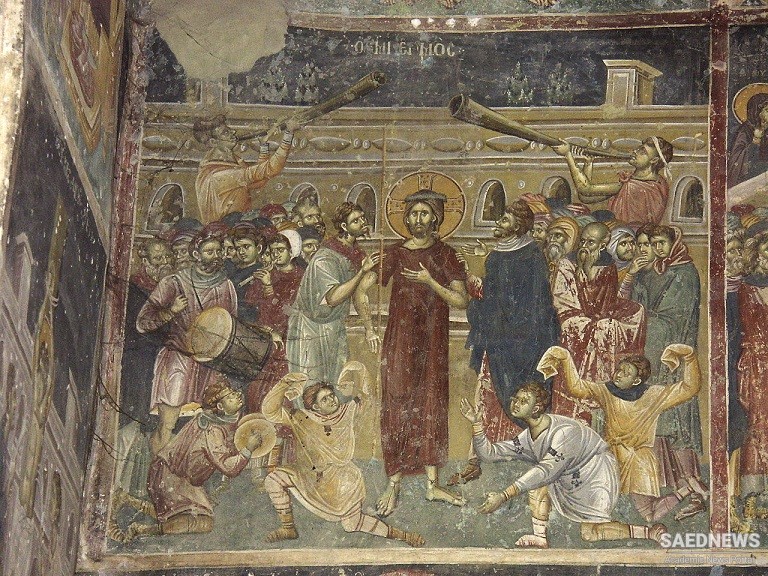The former slightly prefigured the oratorio, while the latter pointed clearly toward the opera. Both of these lines of progress were profoundly influenced by the prevailing types of dramatic effort, but at first their importance lay in discovering strictly musical ways and means for dramatic expression, and in bringing poetic styles into conjunction with musical expression. Filippo Nen (d. 1595) was a zealous Florentine who from about 1550 was prominent at Rome in philanthropic and educational work conducted at the oratory (oratorio) first of the S. Girolamo monastery and later of Sta. Maria in Vallicella, his efforts being so successful as to lead in 1564 to the formation of a brotherhood for popular instruction, called the Congregation of the Oratory (which has had many distinguished members in Italy, France and England, and still exists). Singing was magnified by Neri as 'a help in his meetings, and from 1565 he enlisted the services of G. Animuccia and Palestrina of the Papal Chapel in the preparation of laudl spirituall - plain settings of sacred words, to be sung after his addresses. From this practice came later the name 'oratorio' for a sacred musical drama, though Neri's efforts were not themselves dramatic.
We know little of the details of the first Florentine experitnents, because the works are not preserved. Galilei is said to have been the pioneer with a solo scene from Dante's Inferno and some settings from Lamentations. Ca�valiere followed in 1588-95 with works on classical topics, and in 1594 Peri, perhaps with Caccini, wrote music for Rinuccini's Dafne, privately given at Corsi's house. In all these the style was monodic, probably a crude recitative. In 1594 Orazio Vecchi's AlltjiparJlasso was produced at Modena, a comedy wholly in madrigal style, which was either an unconscious demonstration of the ineptitude of that style for dramatic use or a satire (this work is . extant). A similar work was Banchieri's La pazzia senile, given in 1598 at Venice.
In 1600, however, for the marriage of Henry IV. and Maria de' Medici at Florence, Rinuccini's poeln, Eurz'di"ce was set to music independently by both Peri and Caccini, the performed version being made up from both and the two at once published. Peri's version opens with a seven-stanza prologue in re�citative style, with ritornelli. The dialogue proceeds in recitative with brief interjected choruses, a long passage for a triple flute and a final dance. The ac�companiment is written for a gravicembalo (harpsichord), two large lutes and a lira grande (large viol), with only bare indications of the chords intended. Caccini's version is in the same style, except that he writes more freely for the voices, actually indulging in florid runs or fioriture. These works mark the beginning of the musical drama, the joint production being usually called 'the first opera.' They also, like their man y successors, illustrate the combination of the Mystery with stories of classical mythology.
In 1600, also, but some ten months earlier, Cavaliere's Rappresentazione di anima e dt" corpo had been produced at Rome, apparently as one of a series of sacred musical dramas under the auspices of the Oratorians, all the others of which are lost. This work is not only more extended than the above (some 90 sections), but technically more elaborate. It includes recitatives, solos, short choruses, an instrumental intermezzo, part-song movements, etc., with a final chorus in two alternative forms, one in four parts with dancing and the other contrapuntal. The sense of the text is often musically expressed with effectiveness and evidence of latent power. The accompaniment is de�signed for a gravicembalo, a large lute, a double lira and two flutes, with a violin suggested to strengthen the soprano throughout. Cavaliere died the year before his work was given, but he left explicit directions that show his artistic sense of dramatic values. This is often called 'the first oratorio,' though its adherence to the Morality type was not at all characteristic of its successors - and, indeed, no successor appeared for almost a quarter-century (unless possibly Agazzari's sm3.11 pastoral Eunzelio, 1606, is to be assigned to this class).


 The Medieval Plays
The Medieval Plays














































